Welcome to the vibrant world of bold color choices, where every hue tells a story and every shade has the power to transform your space from ordinary to extraordinary. Whether you’re a novice just dipping your toes into the sea of interior design or a seasoned decorator looking to shake things up, our guide, “10 Tips For Bold Color Choices For Interiors,” is your ticket to creating a home that is as unique and dynamic as you are.
In this guide, we unfold a treasure trove of practical tips that will not only help you select daring colors with confidence but also master the art of balance and harmony in your living spaces. Each tip is crafted to empower you with the knowledge and inspiration needed to make bold choices that reflect your personality and creativity. By embracing these techniques, you’ll discover the sheer joy and satisfaction of transforming your environment into a stunning canvas of self-expression. So get ready to dive into a world of color, and watch as your home comes alive with vibrancy and style!
Incorporate Vibrant Accent Walls
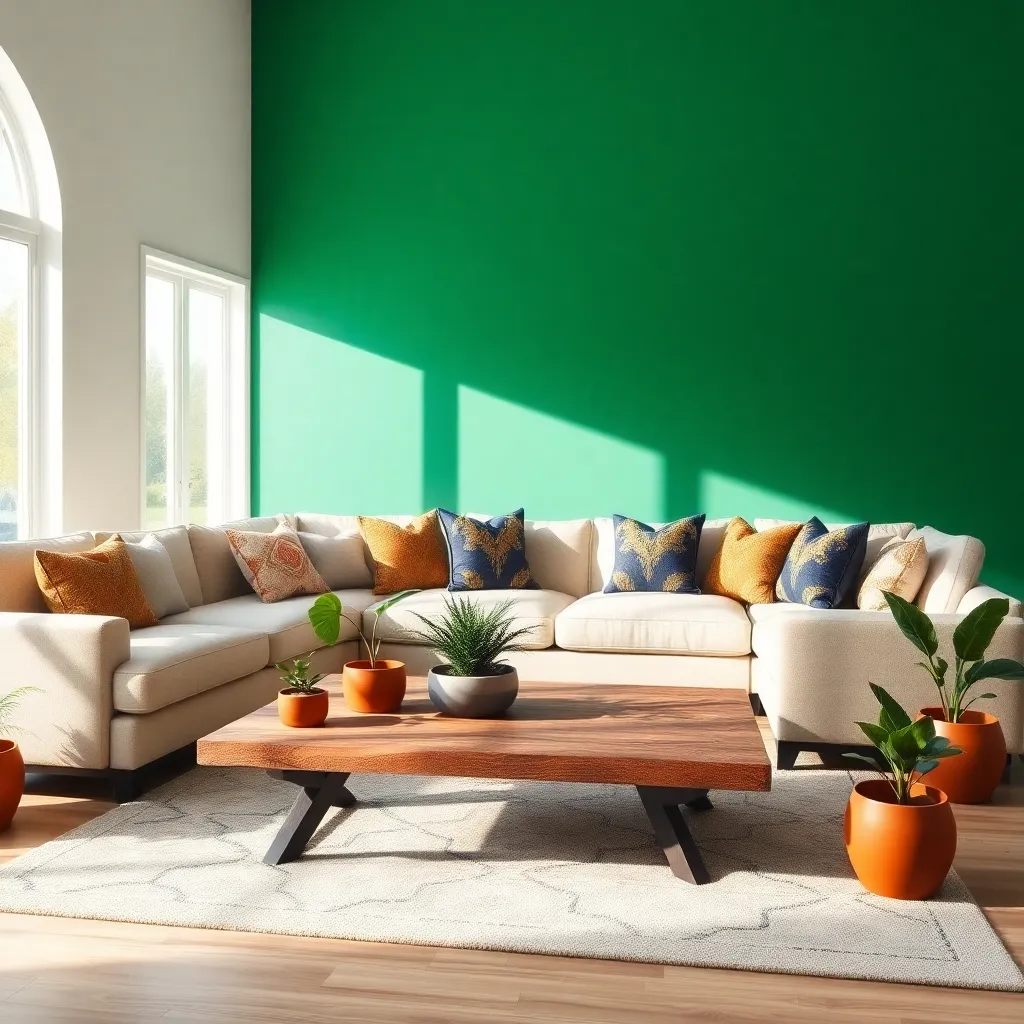
Adding a vibrant accent wall can dramatically transform a room, making it feel more dynamic and energetic. Choose a wall that naturally draws the eye, like the one behind a sofa or a bed, to create a focal point in the space.
For those new to interior design, start with a single bold color such as deep teal or rich mustard to create impact. Pair this with neutral furniture in shades like gray or beige to balance the vibrancy and ensure the room doesn’t feel overwhelming.
Experienced decorators can experiment with more complex techniques like color blocking or geometric patterns on accent walls, adding layers of interest. Use painter’s tape to outline sections and apply complementary colors, such as coral with navy or emerald green with blush, for a sophisticated look.
Consider the existing color palette in your home to ensure the new accent wall integrates seamlessly. Incorporate textiles and décor items, like throw pillows or artwork, featuring the accent wall color to tie the room together harmoniously.
Layer Bright Textures and Fabrics
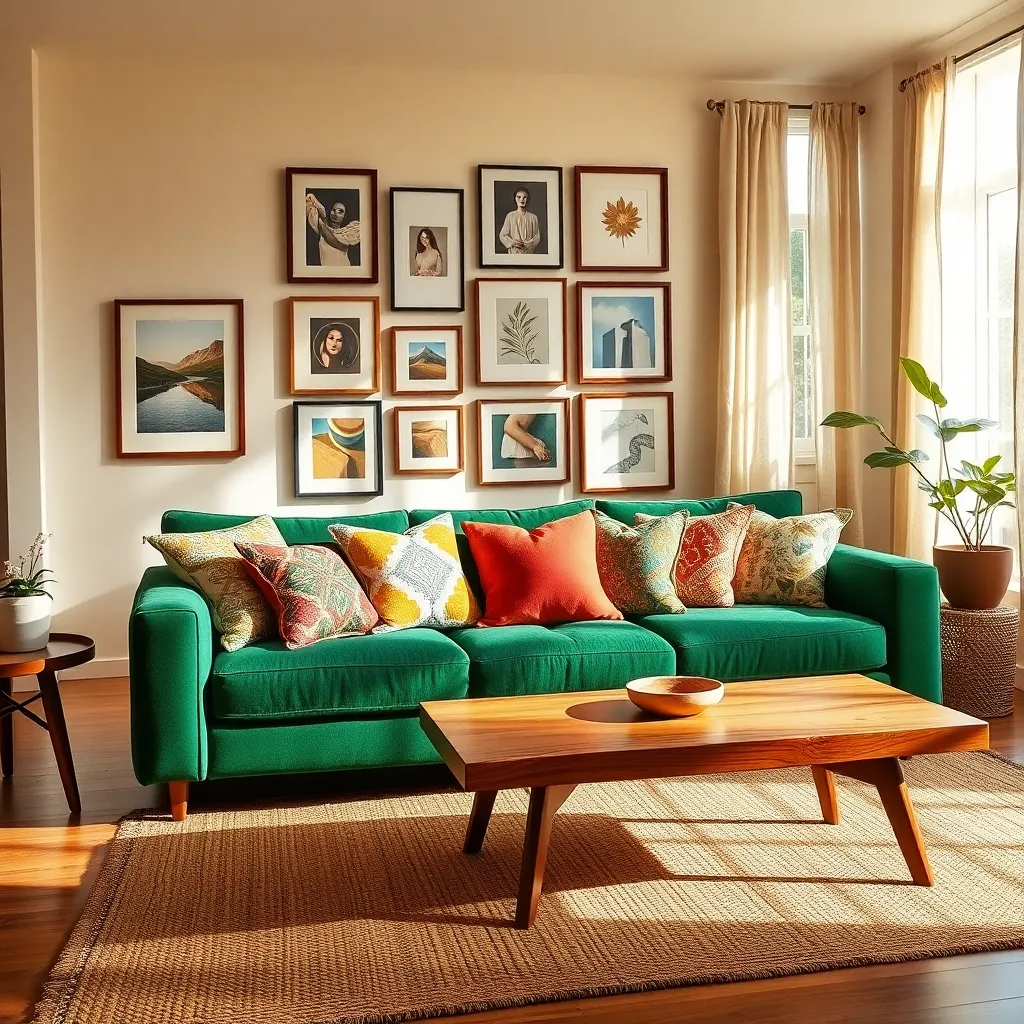
Layering bright textures and fabrics can instantly elevate a room, adding depth and interest. Start with a neutral base for your larger furniture pieces, such as a beige sofa or a white bedspread, to allow your vibrant layers to stand out.
Introduce color through throw pillows, blankets, and rugs in bold hues like teal, mustard, or fuchsia. Mix and match textures by combining materials like velvet, silk, and cotton to create a tactile and visually engaging space.
For a more advanced approach, use varying patterns within your color scheme to add complexity without overwhelming the room. Consider pairing a geometric print rug with floral cushions to create a dynamic contrast that still feels cohesive.
When layering, balance is key; ensure that the distribution of colors and textures feels harmonious. Strategically place brighter fabrics in areas that draw the eye, like a reading nook or a seating area, to naturally guide movement through the space.
Use Complementary Color Schemes
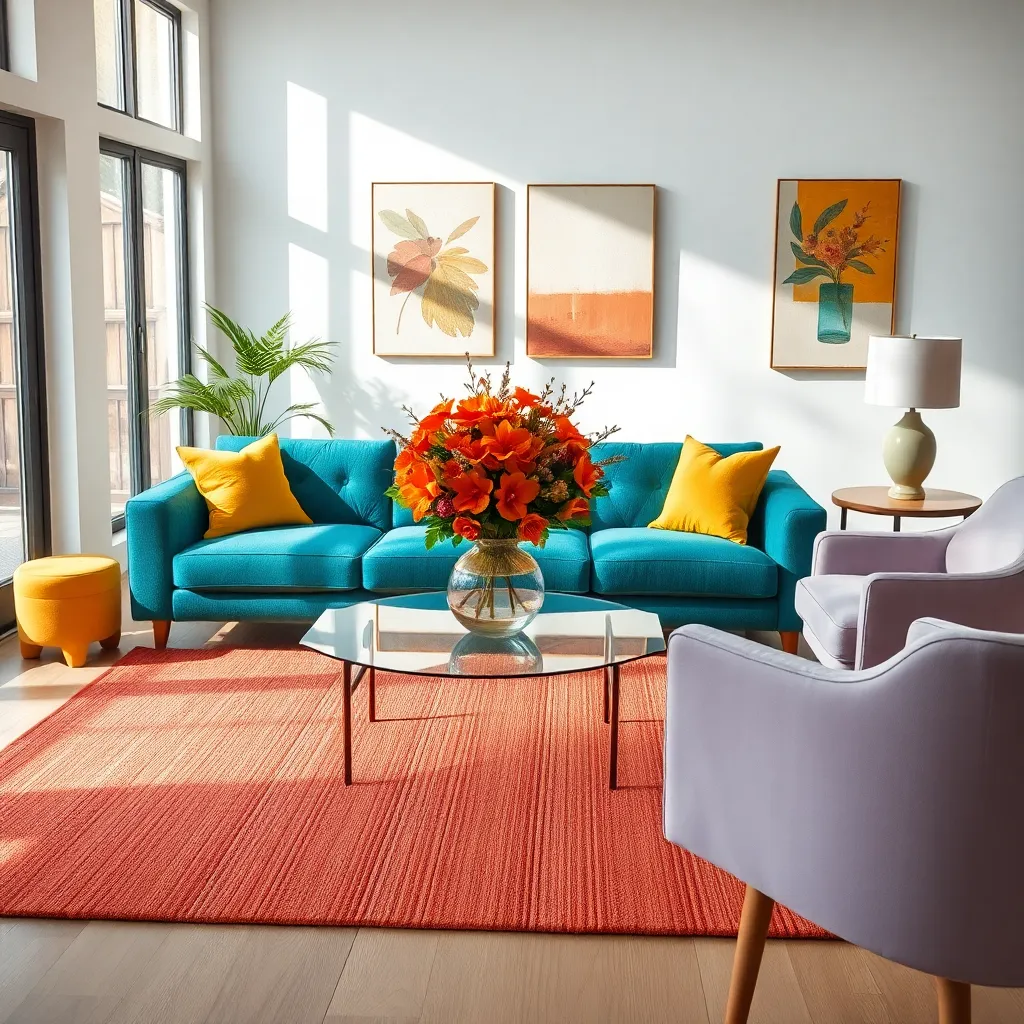
Using complementary color schemes can transform a space by creating visual interest and balance. These schemes involve colors that are opposite each other on the color wheel, such as blue and orange, red and green, or yellow and purple, providing a dynamic contrast that catches the eye.
To implement a complementary color scheme, start by selecting a dominant color for your walls or large furniture pieces. This could be a bold blue sofa or a vibrant yellow wall, setting the tone for the room. Accentuate with smaller pieces in the complementary color, like an orange throw pillow or a purple vase, to create a harmonious yet lively look.
Consider using different shades and tints of the complementary colors to add depth and variety. For instance, pairing a deep navy with a bright, burnt orange can make a room feel sophisticated and inviting. Layering various intensities of the same colors helps maintain the boldness without overwhelming the space.
Advanced decorators can experiment with textures and materials to enhance the effect of complementary colors. A soft, plush green rug can offset a sleek, red leather chair, adding a tactile element to the visual contrast. Playing with different textures not only enriches the color scheme but also adds an extra dimension to your decor.
Highlight Architectural Features Boldly
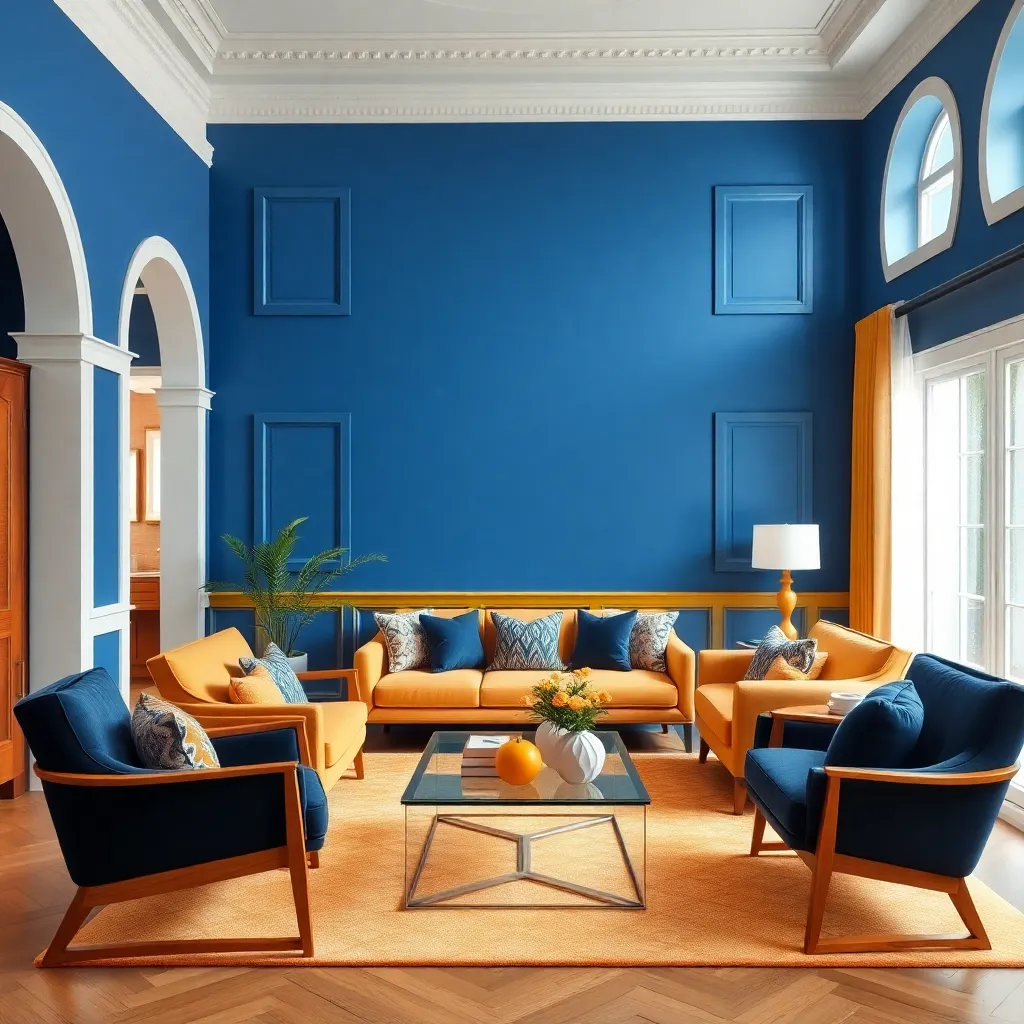
Architectural features can become the standout elements of a room when highlighted with bold colors. Consider painting exposed beams or columns in a vibrant hue like emerald green or cobalt blue to make them pop against a neutral wall.
For beginners, an easy way to start is by using bold colors on window frames or doors, creating a striking contrast with the surrounding walls. This technique draws attention to these features without overwhelming the space.
Advanced decorators might explore using two-tone color schemes on wainscoting or built-in bookshelves. Pairing a deep, rich shade like navy with a lighter tone such as dove gray can add depth and sophistication to the room.
When selecting colors, ensure they complement other elements in the room, such as furniture and textiles. Use color swatches to test how different shades interact with natural light throughout the day, ensuring your bold choices maintain their desired effect.
Introduce Colorful Statement Furniture
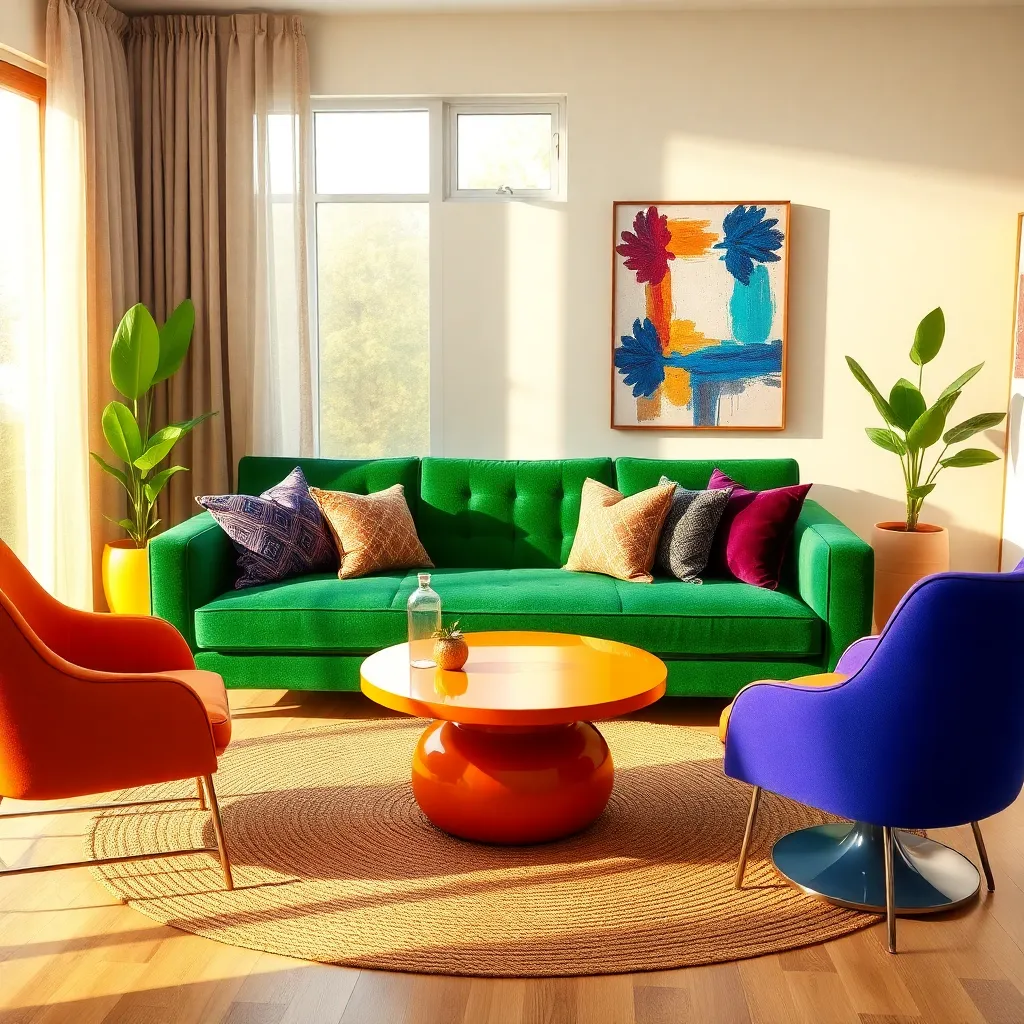
To truly transform a room, consider introducing colorful statement furniture as a focal point. These pieces, whether a vibrant sofa or a bold armchair, can act as both a functional element and an artistic addition to your space.
Begin by choosing a piece that resonates with your personal style and complements your existing decor. Opt for rich jewel tones or bold primary colors to create a striking contrast against neutral backgrounds, ensuring the piece stands out.
Placement is key to maximizing the impact of your statement furniture. Position it in a central location, such as the middle of a living room or at the head of a dining table, where it can draw the eye and anchor the room’s design.
For those ready to experiment, mix and match different textures and patterns to enhance the visual interest of your colorful piece. Consider pairing a velvet mustard chair with a geometric patterned rug to add depth and dimension, creating a cohesive yet dynamic look.
Make sure to balance the boldness of your statement furniture with complementary accents throughout the room.
- Use smaller decor items like throw pillows or artwork in similar hues
- Incorporate metallic touches, such as brass or chrome, to add a touch of elegance and modernity.
Balance Bold Colors with Neutrals
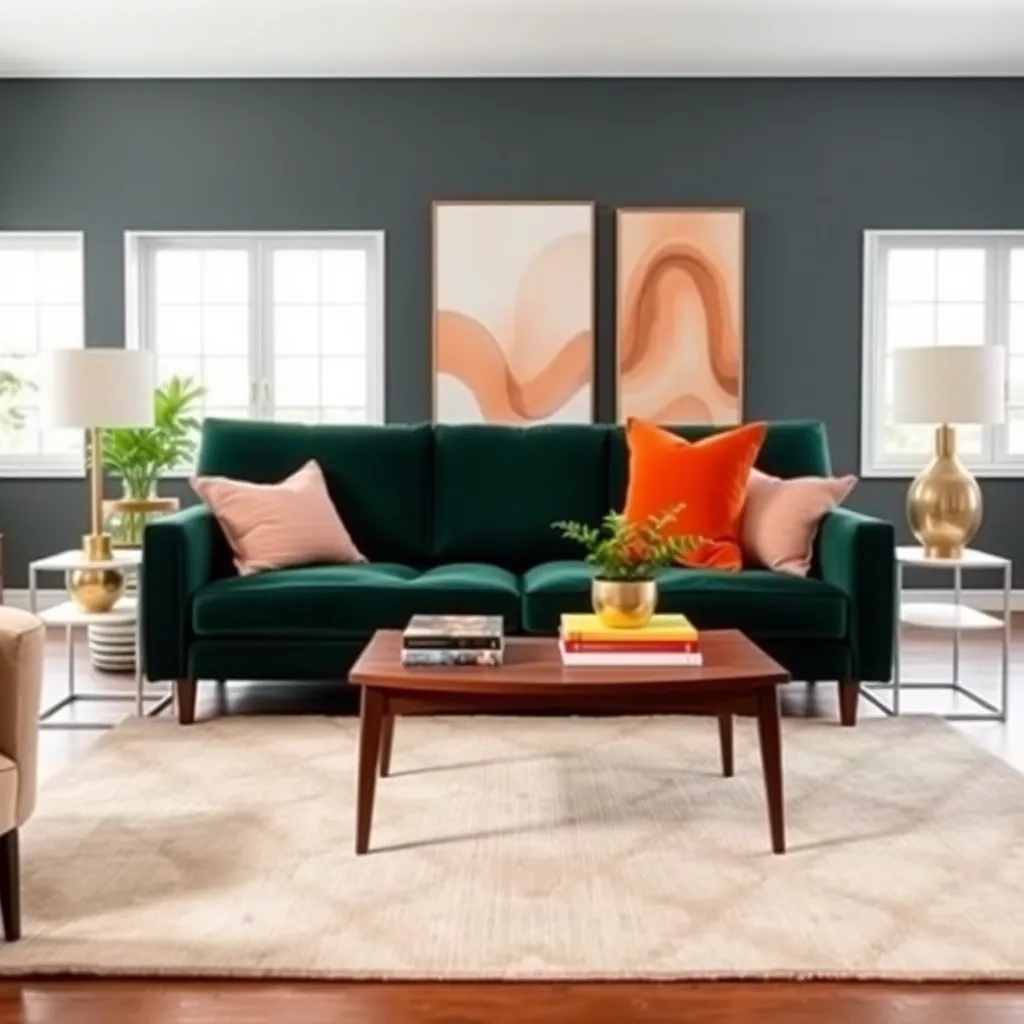
Incorporating bold colors into your interior design can be exciting, but it’s essential to balance them with neutrals to create harmony. Start by using bold colors as accent pieces, such as a vibrant rug or a striking piece of art, and surround these with neutral walls and furnishings to allow them to stand out.
Consider pairing bright hues like royal blue or emerald green with neutral tones such as white, beige, or gray. This combination ensures that the bold colors pop without overwhelming the space. For example, a bold blue sofa can be offset by a light gray or cream-colored throw and pillows, creating a cohesive and inviting look.
For those more experienced in interior design, experiment with different textures in your neutrals to add depth. A soft, neutral linen curtain or a sleek, gray velvet chair can provide a subtle contrast that highlights bold colors. This technique ensures that your space feels layered and sophisticated rather than flat.
Remember, the placement of bold and neutral elements is crucial. Bold colors should draw the eye to focal points such as a fireplace or a feature wall, while neutrals should create a calming backdrop. By strategically placing bold colors against neutral elements, you can guide the flow and energy of the room, making it both dynamic and serene.
Experiment with Colorful Lighting
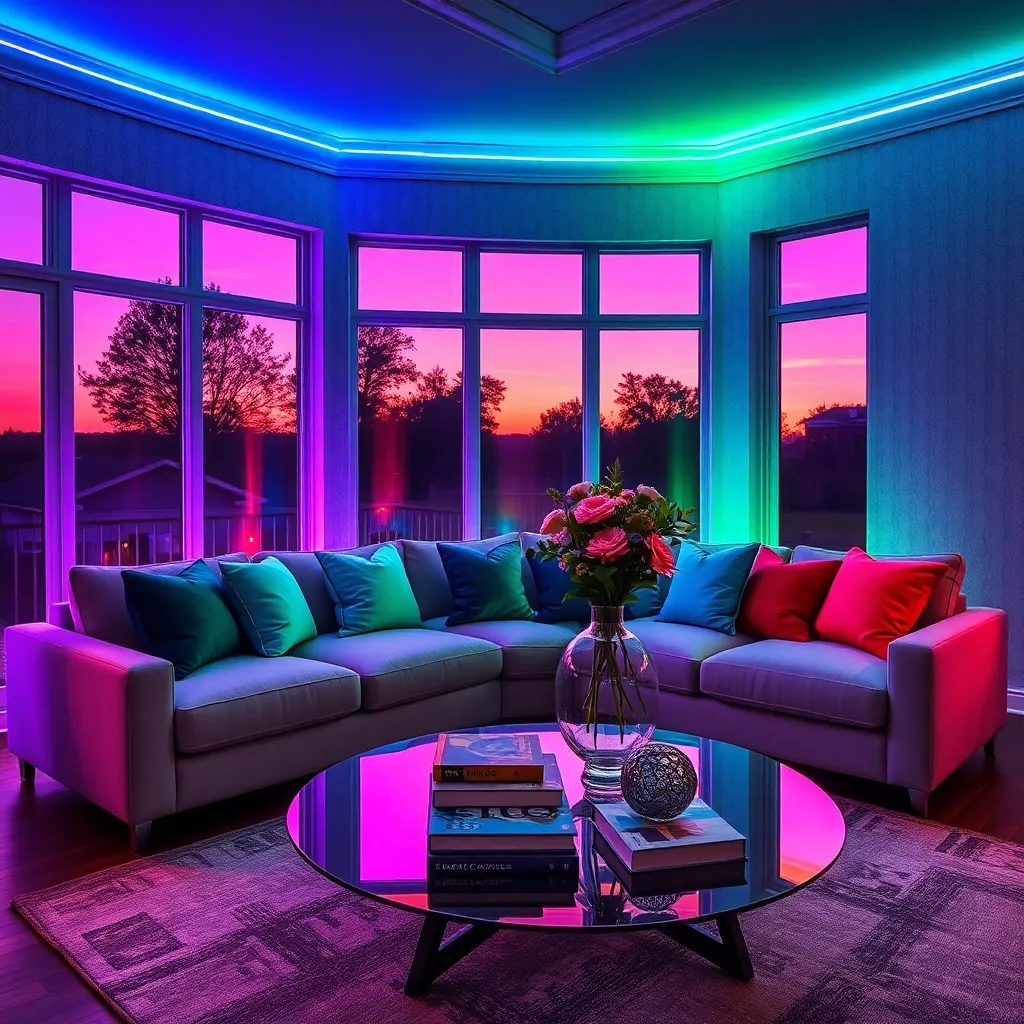
Lighting is a transformative tool in interior design, and experimenting with colorful lighting can add depth and interest to any space. Begin by incorporating colored LED bulbs into lamps or ceiling fixtures to create a warm or cool ambiance, depending on the mood you wish to evoke.
For a more dramatic effect, consider using smart lighting systems that allow you to change colors with the touch of a button. These systems enable you to adjust the lighting to suit different occasions or times of day, offering flexibility in how your space feels.
Placement is crucial when using colorful lighting. Install LED strips under cabinets or along shelves to highlight architectural details and add a pop of color without overwhelming the space.
Advanced decorators might explore using colored light fixtures themselves, such as pendant lights with tinted glass shades, to introduce color subtly. Pair these with neutral walls and furniture to let the lighting become a striking focal point in the room.
Add Eye-Catching Art Pieces
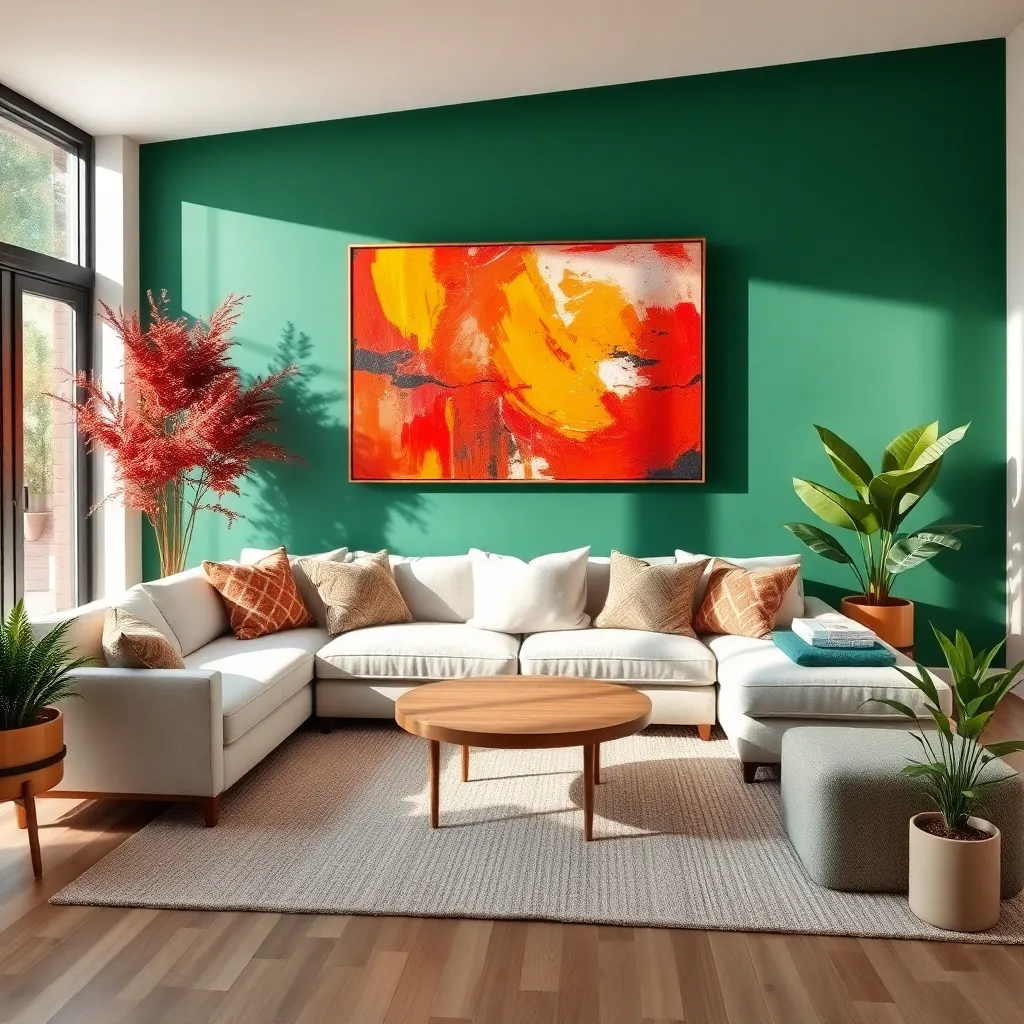
Adding eye-catching art pieces can dramatically transform your space by introducing bold colors and unique styles. Choose art that resonates with your personal taste, but also consider how the colors in the artwork complement your existing decor.
For beginners, start with a large statement piece to anchor a room, such as a vibrant painting above a sofa or a striking sculpture in a hallway. Consider the scale and proportion of your chosen art to ensure it harmonizes with your furniture and room dimensions.
Experiment with grouping smaller pieces to create a cohesive gallery wall that showcases a range of colors and themes. Use frames in similar finishes to unify the collection, while allowing the art itself to display a variety of hues and textures.
For a more advanced approach, consider using art to create a color palette for your room. Select two or three dominant colors from the artwork and incorporate them into your furnishings, textiles, or accessories for a polished, professional look.
Choose Colorful Window Treatments
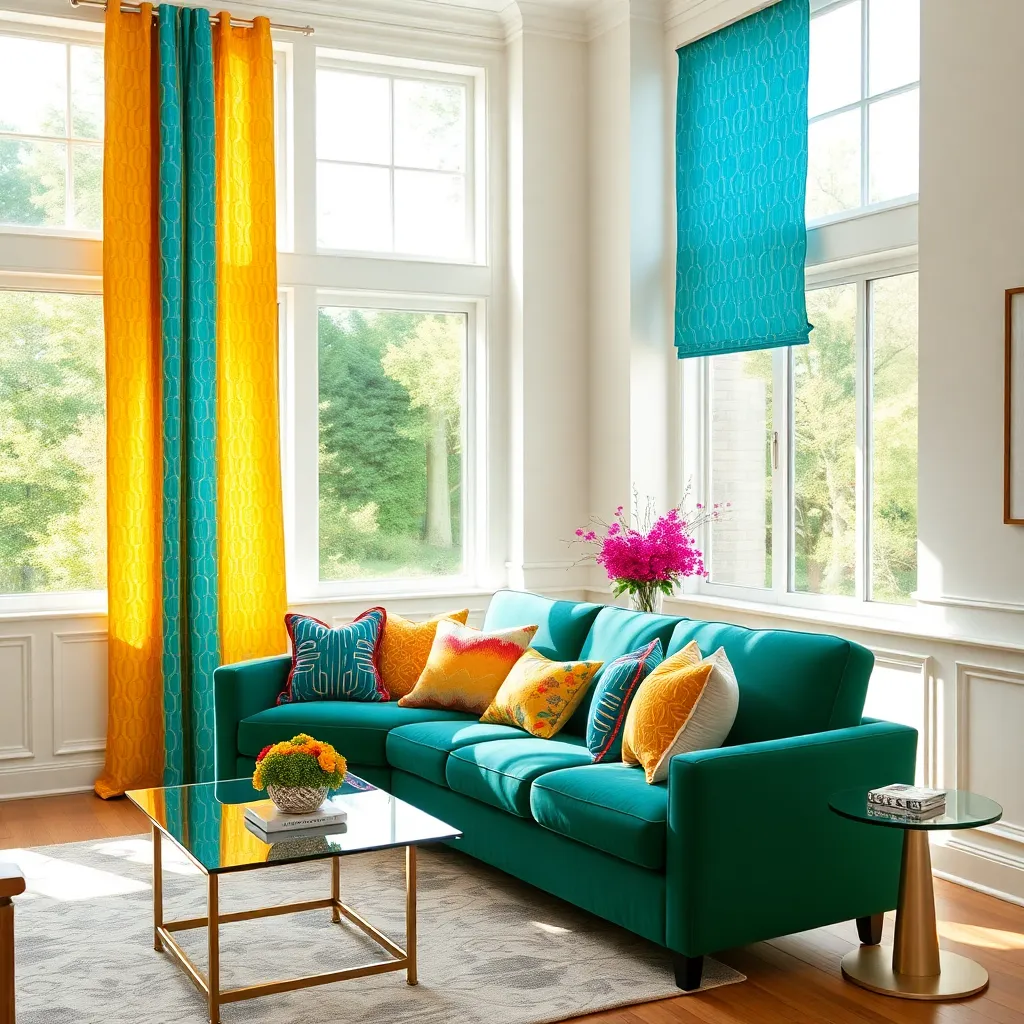
Choosing colorful window treatments is an excellent way to introduce bold hues into your space without a long-term commitment. Start with a neutral room and select curtains or blinds in vibrant shades like emerald green, royal blue, or even a rich maroon to create a statement.
For a cohesive look, coordinate your window treatments with other elements in the room, such as throw pillows or a rug. This technique creates a harmonious yet dynamic appearance, integrating the bold colors seamlessly into your decor.
Beginners can experiment with sheer fabrics in brighter colors to allow natural light to filter through, giving the room a soft glow. On the other hand, more experienced decorators might opt for layered window treatments, combining patterned drapes with solid-color blinds to add depth and texture.
When selecting materials, consider using natural fibers like cotton or linen for a casual vibe, or opt for silk or velvet for a more luxurious feel. To make your windows a focal point, install curtain rods that extend beyond the window frame, allowing the fabric to drape elegantly and drawing the eye upward.
Accessorize with Bold Color Decor

Bold color decor accessories can instantly transform a space, adding vibrancy and personality to any room. Start with small items like throw pillows, vases, or picture frames in striking hues to introduce color without overwhelming the space.
Mix and match different textures to create a dynamic and cohesive look. For instance, pair a velvet teal cushion with a glossy red vase and a woven mustard throw to maintain a lively yet balanced atmosphere.
Consider using bold colors in unexpected places to draw the eye and add interest. A brightly colored lamp or a patterned area rug can serve as a focal point, anchoring the room and tying together various color elements.
For a more adventurous approach, layer different bold colors to create a curated and eclectic vibe. Experiment with complementary colors like a deep navy and rich orange for a sophisticated contrast that energizes the space while maintaining harmony.
Conclusion: Growing Success with These Plants
As we wrap up our exploration of bold color choices for interiors, remember how these ten vibrant tips can enhance not only your living space but also your relationships. From understanding color psychology to mixing patterns and textures, each concept is designed to infuse your environment with energy and warmth. We’ve explored the art of accent walls, how to balance bold hues, and the subtle power of color contrasts. We’ve touched upon the charm of complementary palettes and the importance of light and space in color selection. Finally, we discussed creating mood-enhancing atmospheres and personalizing spaces with meaningful color stories.
Now, take a moment to choose one room to transform today. Perhaps start by selecting a new bold shade to invigorate your space and spark fresh, lively interactions. Remember, our surroundings deeply influence our connections, so let your home be a vibrant canvas for love and understanding.
Bookmark this article to revisit these tips and ensure your interiors continue to support and enliven your relationships. As you embrace these changes, envision a future where your surroundings inspire and nurture the bonds you cherish. Together, let’s paint a brighter, more connected tomorrow.
